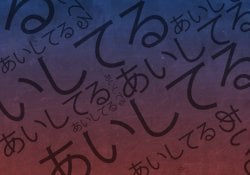One of the most important things while traveling in Japan is knowing how to ride the endless train lines that surround Japan. Although many stations have instructions in English, you may need to ask a Japanese native for information. Thinking about this need, we wrote this article that will help you catch trains in Japan and communicate with people and ask for information at the station.
If you are a tourist, to avoid problems with buying trem tickets we recommend purchasing the JRPass, a cardboard that allows you to ride on most train lines throughout Japan.
Índice de Conteúdo
Catching the tremor in Japan
In Japan, you pay per station, tickets are sold in automatic machines, do not abandon your ticket as it is also used to exit the station. You must pay close attention to the cars, some trains have exclusive cars for women and smokers. Remember that train stations do not operate 24 hours a day.
To better understand how trains in Japan work, let's leave some videos below:
Phrases about trains in Japan
There are thousands of articles and videos on the internet explaining how to take trains in Japan. We don't want to cover the same things as these sites, let's go deeper and study ways to communicate at a train station.
Below are some phrases that you will likely need to speak or hear during your train ride in Japan. Study them well and be prepared because you may not hear the exact phrases below.
「山の手線」はどこですか?
[yamanote sen] wa doko desu ka?
Where's the [yamanote line]?
「秋葉原駅」に行きたいですが。
I want to go to Akihabara station.
I want to go to [Akihabara Station].
「山の手線」のホームはどこですか?
[yamanote sen] no hoomu wa doko desu ka?
Where is the platform for [yamanote line]
この電車は「東京駅」行きですか?
kono densha wa [toukyou eki] yuki desuka?
Is this the train going to Tokyo station?
十一時の電車に乗ります。
juuichiji no densha ni norimasu.
I'm taking the 11 o'clock train
渋谷で電車をのりかえなければならない。
You have to change trains at Shibuya.
You have to change trains in Shibuya.
あなたはその列車に間に合わないでしょう。
Anata wa sono ressi ni maniawanaideshou.
You will not be able to take the train.
電車を乗り違えていますよ。
Densha nori chigaete imasu yo
You are on the wrong train.
電車が遅れている。
Densha ga okurete iru.
The train is late.
電車を乗り間違えた。
Densha the noriga machigaeta.
I took the wrong train.
その列車はすでに出発してしまった。
Sleep resha wa sudeni shuppatsu shite shimatta.
The train has already left.
列車は午後2時半に出る。
Ressha wa gogo 2-jihan ni deru.
The train leaves at 2:30 pm.
汽車はまだ着きません。
Kisha wa mada tsukimasen.
The train has not yet arrived.
Vocabulary related to trains in Japanese
What is the difference between the words densha (電車), kisha (汽車) and ressha (列車)? The word "densha" is used for electric trains, while "kisha" is used for steam trains, and the word "ressha" can be used for both and refers to the trains that make up the train. There is also the bullet train called "shinkansen" (新幹線).
If you are traveling for the first time by train in Japan, keep an eye out for these words from the list below.
Responsive Table: Scroll the table sideways with your finger >>
| Portuguese | Japanese | Romaji |
| Agenda / Calendar | 時刻表 | jikoku hyou |
| 2nd class | 二等車 | nitou sha |
| window seat | 窓側の席 | mado gawa no seki |
| aisle seat | 通路側の席 | tsuro gawa no seki |
| Book seat | 自由席 | jiyuu seki |
| Priority seat | 優先席 | yuusen seki |
| Reserved seat | 指定席 | shitei seki |
| Subscription ticket | 定期券 | teiki ken |
| Passenger ticket | 乗車券 | jousha ken |
| Ticket | 切符 | kippu |
| Box office | 窓口 | mado guchi |
| Cancel | 取り消し | tori keshi |
| Non-smoking car | 禁煙車 | kinen sha |
| Green Car / First Class | グリーン車 | guri-n sha |
| Stationmaster / Manager | 駅長 | ekichou |
| Train conductor | 車掌 | shashou |
| Destiny | 行き先 | iki saki |
| Direction | 方面 | houmen |
| Employee / gas station attendant | 駅員 | ekiin |
| Station entrance | 改札口 | kaisatsu guchi |
| Season | 駅 | eki |
| Express that stops at the main stations | 急行 | kyuukou |
| track 3 | 3 番線 | san ban sen |
| Time to go | 発車時刻 | hassha jikoku |
| Line | 線路 | senro |
| Main line | 本線 | honsen |
| Faster than espresso | 特急 | tokkyuu |
| Ticket vending machine | 自動券売機 | jidou kenbai ki |
| Seat number | 座席番号 | zaseki bangou |
| First train | 始発 | shi hatsu |
| Necessary time | 所要時間 | shoyou jikan |
| Ticket | 回数券 | kaisuu ken |
| Train with more than 2 wagons | 列車 | reshape |
| Train transfer / change | 乗り換え | norikae |
| Bullet train | 新幹線 | shin kan sen |
| Express train | 準急 | junkyuu |
| Train stopping at all stations | 普通 | futsuu |
| Train stopping at all stations | 各駅停車 | kakueki teisha |
| Train | 電車 | densha |
| Exchange / Exchange money | お釣り | otsuri |
| Last stop / Terminal | 終点 | shuu ten |
| Smoking car | 喫煙車 | kitsuen sha |
| Vehicle / Locomotives | 車両 | sharyou |
| Round trip | 往復 | or fuku |
| One-way trip | 片道 | kata michi |
| Last train | 最終電車 | saishuu densha |
| Last train | 終発 | shuu hatsu |
| Last train | 終電 | shuu den |
We already wrote another article talking about trains in Japan, you can read this article clicking here.





